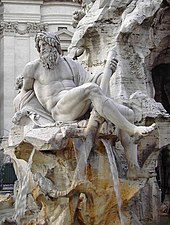by Joseph Conrad
1. The plot of the story is about a sailor named Marlow, who takes a job as a riverboat captain on the Congo. Marlow travels to Africa and then up the river to meet Kurtz, a man of great importance to the Congo. While Marlow travels up river to get to Kurtz he sees all the injustices and horrors that the Belgians committed to the local peoples. Marlow learns of Kurtz becoming deathly ill, and he become very anxious to reach Kurtz faster. Throughout the trip, they have many mechanical problems with the boat and they are also attack at one point by the natives. Marlow finally reaches Kurtz, however Kurtz is on the edge of dying. When they head back down river Kurtz hands Marlow some documents then dies. Marlow soon becomes ill himself but manages to barely survive. Later when he returns to Europe he find Kurtz's fiancée and gives he some closer by telling her that his last word was her name, when in fact they were "The horror! The horror!"
2. A major theme in the book is madness caused by imperialism and how imperialism causes all the people involved to be come "mad" someway or another.
3. The author's tone is very dark and depressing.
- "The brown current ran swiftly out of the heart of darkness, bearing us down towards the sea with twice the speed of our upward progress; and Kurtz's life was running swiftly, too, ebbing, ebbing out of his heart into the sea of inexorable time. The manager was very placid, he had no vital anxieties now, he took us both in with a comprehensive and satisfied glance: the 'affair' had come off as well as could be wished. I saw the time approaching when I would be left alone of the party of 'unsound method.' The pilgrims looked upon me with disfavour. I was, so to speak, numbered with the dead. It is strange how I accepted this unforeseen partnership, this choice of nightmares forced upon me in the tenebrous land invaded by these mean and greedy phantoms."
- "His was an impenetrable darkness. I looked at him as you peer down at a man who is lying at the bottom of a precipice where the sun never shines. But I had not much time to give him, because I was helping the engine-driver to take to pieces the leaky cylinders, to straighten a bent connecting-rod, and in other such matters. I lived in an infernal mess of rust, filings, nuts, bolts, spanners, hammers, ratchet drills -- things I abominate, because I don't get on with them. I tended the little forge we fortunately had aboard; I toiled wearily in a wretched scrap-heap -- unless I had the shakes too bad to stand."
- "The current was more rapid now, the steamer seemed at her last gasp, the stern-wheel flopped languidly, and I caught myself listening on tiptoe for the next beat of the boat, for in sober truth I expected the wretched thing to give up every moment. It was like watching the last flickers of a life."
4. Five literary techniques that helped me understand the story more are:
Foreshadow- the fog foreshadows something bad is about to happen.
Imagery- the use of imagery lets us really get a picture of the scene.
Metaphor/Simile- gives us a way of relating what is happening or going on to something that we can understand better.
Symbolism- the river in the story symbolizes the white man/ imperialists fighting against the natural order of the Congo.
Syntax- the way the author writes brings out the eeriness of the Congo
Tone- since the author uses a dark tone it creates a gloomy story.
"Some fifty miles below the Inner Station we came upon a hut of reeds, an inclined and melancholy pole, with the unrecognizable tatters of what had been a flag of some sort flying from it, and a neatly stacked woodpile."
"When the sun rose there was a white fog, very warm and clammy, and more blinding than the night. It did not shift or drive; it was just there, standing all round you like something solid. At eight or nine, perhaps, it lifted as a shutter lifts. We had a glimpse of the towering multitude of trees, of the immense matted jungle, with the blazing little ball of the sun hanging over it -- all perfectly still -- and then the white shutter came down again, smoothly, as if sliding in greased grooves. I ordered the chain, which we had begun to heave in, to be paid out again. Before it stopped running with a muffled rattle, a cry, a very loud cry, as of infinite desolation, soared slowly in the opaque air. It ceased. A complaining clamour, modulated in savage discords, filled our ears. The sheer unexpectedness of it made my hair stir under my cap. I don't know how it struck the others: to me it seemed as though the mist itself had screamed, so suddenly, and apparently from all sides at once, did this tumultuous and mournful uproar arise."
"I flew around like mad to get ready, and before forty-eight hours I was crossing the Channel to snow myself to my employers, and sign the contract."















